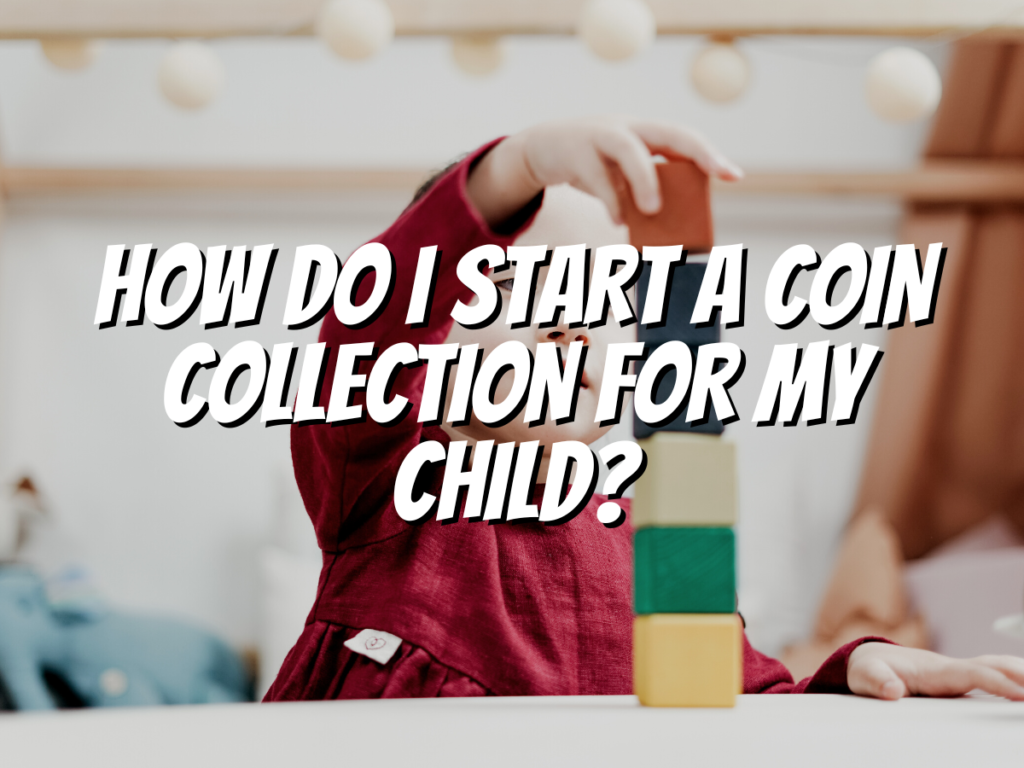A coin collection is an excellent way for children to learn about money and history.
You can start a child’s coin collection in many different ways, from starting with a piggy bank to buying coins from the U.S. Mint or other countries.
Here are some tips on how to get started:
How do I Start a Coin Collection for My Child?
1. Start with a Piggy Bank to Start Your Child’s Coin Collection.

Piggy banks are one of the easiest ways to get started collecting coins.
You can buy them at most stores or use an old jar or bottle already standing around your house.
Your child’s first collection may only consist of pennies, but eventually, she’ll want more variety!
That’s why it’s important not only to provide an example by starting your coin collection at home but also for you to team up on this project together.
With their allowance money and maybe even some extra cash from birthday parties, birthdays, holidays, and other special occasions throughout the year, those savings can add up!
2. Have Your Child Choose Which Coins They Want to Add to the Collection.
As you choose which coins to include in your collection, have your child help you select which ones they want to add.
The choices will be meaningful when made by the person who will look at them daily.
Your child may choose some coins because of what they mean, such as an older coin that belonged to a family member or one with a special design (such as a commemorative coin).
They may also choose coins based on their age and condition.
For example, if your family has been saving specific types of coins for many generations, these would likely be high-priority items for display within any collection.
In addition to including personal items from the past, make sure that new additions are chosen based on current interests and hobbies so that the collection continues growing over time without becoming stagnant or boring.
3. Keep the Coins of Each Denomination in a Separate Bag.
Here’s how you can get started:

- Collect coins of different denominations in separate bags.
- What do we mean by denomination? Each coin has its value based on how much it’s worth in relation to other coins—for example, an American quarter (25 cents) is worth more than a dime (10 cents).
- So if one of these coins was accidentally mixed up with others of higher or lower denominations, you could encounter problems when exchanging it later.
- Use them as a teaching tool!
- You can take your child along when shopping or traveling so they can see firsthand where their money goes when they purchase something at the store.
- This will help build their sense of responsibility around spending and saving as well as teach them about supply-and-demand economics principles such as scarcity and opportunity cost (when something that would otherwise be used takes priority over another thing).
4. Get Books to Help Identify the Coins Your Child Finds.

You should also get books that will help you identify the coins your child finds.
You can find these at your local library or on Amazon, and they’ll tell you what each coin is worth (if anything), when it was made, and who printed it.
This way, your child won’t confuse a nickel with a quarter or accidentally throw away an old penny!
Finally, you should also buy some plastic storage containers if you don’t have any lying around—these are useful for storing your coins safely until they’re ready to be put into albums or display cases.
A Coin Collection is an Excellent Way for Children to Learn about Money and History.
Coin collecting is an excellent way for children to learn about money and history.
It is a hobby that can be enjoyed for years, so it’s an excellent choice for anyone who wishes to collect something that will last—and perhaps even appreciate over time.
We hope we’ve given you some great tips for starting a coin collection with your child.
Before you go…
You don’t have to spend much money on fancy accessories or supplies; just get started with what you have!
Check out my next article: “What is the Best Coin to Start Collecting.”
Related Articles:

